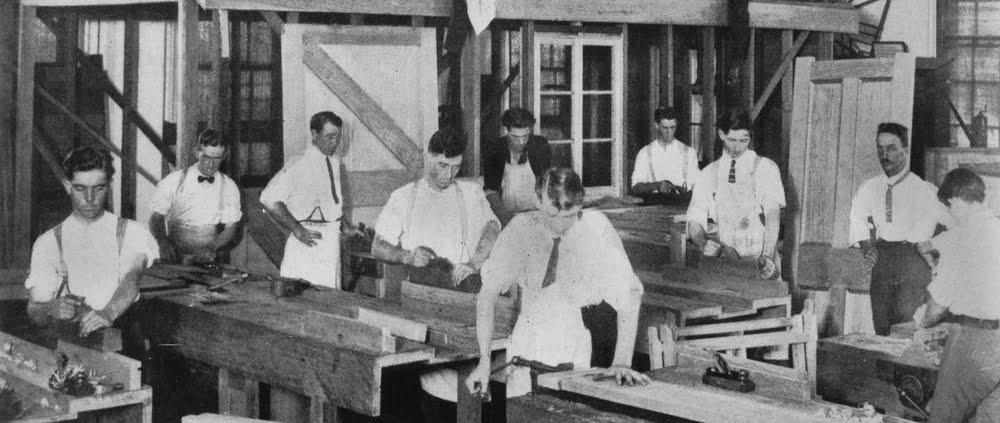Queensland History 1860-1900 Part 2
A s mentioned in the our previous article, the development of Queensland was heavily influenced by distance and time. The regional towns and hence shopfitters reflected the peculiarities of the towns which were influenced by the conditions that had led to their establishment. Relatively small populations led to shopfitters filling more than one role, e.g. W. Reed in Ipswich combined the role of cabinetmaker and undertaker!
Charters Towers
Towns up the east coast of Queensland in most cases began to thrive in the late 1800s, with the finding of gold and the setting up of the infrastructure to service the population explosions this brought. Most towns were situated on rivers and became port towns, shipping the gold or other minerals to the coast for export. All these towns required shopfitters to assist with the growth of stores, hotels, government offices etc, to cater for the booming population growth and the building of beautiful heritage style buildings.
Many of these have been preserved and a fine example is the beautiful inland city of Charters Towers where the Venus Gold Battery was established in 1872. Many miners became millionaires and the town thrived and at one stage Charters Towers was the largest town in Queensland. The Royal Arcade, a shopping arcade of fine shops was built in 1887, but with such growth from the gold mines, the arcade became the Charters Towers Stock Exchange in 1889. The town was described as having streets of fine shops and residences, cold air stores, telephones, electric light, gas light and electric fans. At one stage, the town had 104 hotels. As well as shopfitters, many well-known characters came to the town, such as Breaker Morant, Andrew Dawson, the first Labour Premier in the world and a man named Benjamin Toll.
Benjamin Toll started out as a builder, merchant and undertaker/embalmer as well as serving for a while as Lord Mayor, he also started a business as the Phoenix Steam Joinery works prior to 1893. He advertised and provided architecture ‘own designs’ (at Southern Prices), joinery of all descriptions, sashes, doors, shopfittings, mouldings etc. He had a factory in Mary Street and a showroom in a building he called the Bazzar (at 189 Gill Street, the main street), where he offered designs and hardware to customers. He had over 200 staff at one stage and was ahead of his time with ideas and methods. He also carried out upholstery, silverware electroplating and supplied and laid carpet. He stocked ironmongery, hardware, locks, and handles etc. This business lasted for many years, until he unfortunately was declared bankrupt, approximately 30 years later.
Also at that thriving time for the town, were other cabinetmakers/ shopfitters, cashing in on the fitout works to all the new buildings, such as the following:
• Arthur Curry
• Max Hilder – Gill Street
• A Falsett (a former employee of Benjamin Toll)
• A.J. Andrews – Gill Street
• G.H. Smith – Gill Street
During this exuberant time and dynamic period, many solid Victorian buildings (which remain today) were built by the city fathers determined to flaunt their wealth and, in terms of public architecture, is unrivalled in Queensland.
A common theme in many of the regional towns in that era I have come across is that the shopfitter also offered his services not only to make coffins, but he was also an undertaker in the town.
Maryborough
Maryborough is another town that benefited from a gold rush in 1856. It is one of Queensland’s oldest towns and was also a port city. At one stage in the early days, it was second to Sydney as an eastern seaboard port for timber, wool, meat, sugar and coal. The town was planned with wide streets in the centre, fine Victorian architecture, and the latest shopfronts and shopfittings, establishing itself as the shopping hub of the Central goldfields and very beneficial to the local shopfitting industry.
Maryborough, being blessed with surrounding hoop pine and cedar forests, had many timber mills supplying cabinetmakers and shopfitters at the time. Hyne Timber began in Maryborough in 1882 and still trades today, with plants up the east coast of Qld and in NSW. In Qld, by-products of the mill are used by Laminex Industries and by Visy in NSW.
One early cabinetmaker/shopfitter was Denson & Wallace who commenced in 1875 in a factory in the central town area. They advertised that they could make shopfittings, sashes etc and could make to order ‘on the shortest notice’ (nothing has changed). They also offered to make shopfittings, doors, sashes at prices ‘that will defy competition’.
One of their competitor companies in 1875 was another Shopfitting company known as Henry Parsons. They advertised that they could make ‘shopfronts and fittings made to order’ and ‘every description of joinery work done’ as well as ‘plans and estimates given at lowest machine prices’. One of the stores fitted out in 1896 was a general store known as Brennan & Geraghty’s. This store remains today but as a Museum with original counters, bottles and boxes dating back to the 1890s.
Another museum but still actually trading as a pharmacy, is the former Gaydon’s Pharmacy in the nearby Heritage listed town of Childers. The pharmacy has the original polished cedar timber/glass counters and timber wall units, including old glass bottles, gold leaf lettering to signs, and Wedgwood mortar and pestles from the 1894 fit-out.
Townsville
Townsville, the unofficial Capital City of North Queensland, has always been regarded as a working-class city. It was also a port city for the export of gold from Charters Towers and later bulk ore from Mt Isa. The town centre suffered many large fires in the early days. There have also been many cyclones and floods and it was bombed three times by the Japanese during World War 2. One could say the renewal of the Central Shopping District is forced by nature to occur regularly.
Ipswich
Ipswich is another town that was an early important port city, even though only 40km upstream from Brisbane.
Industry had to use the river to ship coal, wool, limestone and at one stage in 1858 it was considered as a possible capital for Queensland. Ipswich also benefited from having railway before Brisbane, so the town was a wealthy bustling area, well known for its fine architecture both used in city buildings and attractive shops. Also, because of the wealth at the time, there was a beautiful style of home known mainly only to Ipswich which was made from predominately low set local made brick with curved iron rooves and locally made cast iron lace features. Many of the old stores and houses are heritage listed.
Two companies carrying out shopfitting in 1885 have been found in advertising. E Meggitt in Bell St. Ipswich advertised that they had a workshop ‘for the manufacturing of shopfittings and joiners’ work’. They had also opened a showroom in Bell St. their advertising continued, ‘hopes by combining good workmanship with moderate charges the public will merit a share of their support’. W. Reed advertised as a ‘Cabinetmaker and Undertaker’ in Brisbane St. Ipswich, a friendly offer.
Ipswich had some large retailers and department stores, one such store that opened in1849 as Cribb and Foote, (becoming Reids in 1977) was a centre piece of the central shopping area, until the disastrous fire of 1985 decimated the whole central shopping district.
Attempts to rebuild a financially successful and inviting space for customers and the Central Shopping Plaza for retailers since the 1985 fire, have not worked to date and as recently as a few months ago it was announced by Ipswich Council that a total rebuild of the whole central shopping area will occur as an inducement to regrow the shopping experience in the city.
The early settlers in the above port cities located the central business areas close to the rivers as required for trading purposes. However, in 1893, 1974, and 2011 in conjunction with yearly cyclones and high tides, all the eastern seaboard cities have suffered severely from flooding. On top of the major events, traditionally one or two cyclones will cause damage at selected towns as the cyclone crosses the mainland in the monsoon season. In some towns, shopfitters in Queensland have for years been manufacturing the fitouts in waterproof ply/laminated, only to leave during times of flooding. Some towns with imminent flood warnings have local transport companies ready to totally empty the shops of fixtures and fittings on semi-trailers to higher covered storage for three or four days, till such time as the retail precincts are washed and cleaned after the flooding has receded, then the job of reinstalling the fixtures and fittings begins once more. This, apparently, is cheaper than the insurance premiums.
To be continued.


Leave a Reply
Want to join the discussion?Feel free to contribute!